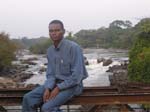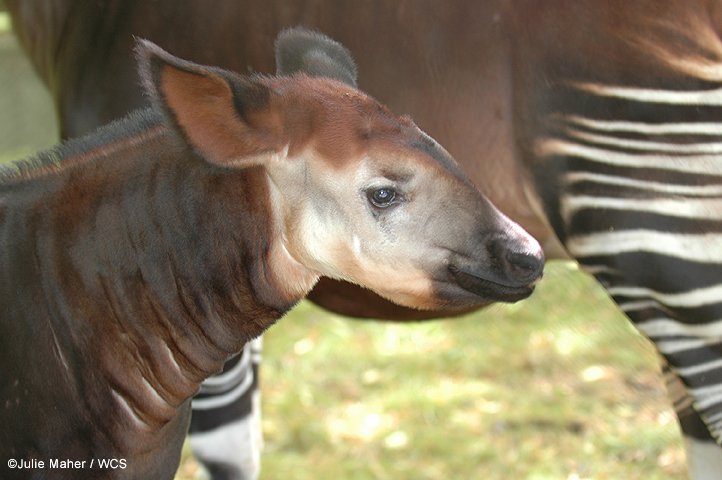Okapi, other wildlife saved in the Congo by forest protector
Corneille Ewango wins prestigious Goldman Environmental Prize for risking his life
Wildlife Conservation Society release
April 21, 2005
 Picture courtesy of the Goldman Environmental Prize. |
Corneille Ewango of the Wildlife Conservation Society today received the prestigious Picture courtesy of the Goldman Environmental Prize for risking his life helping to protect one of Africa’s environmental gems—the Okapi Faunal Reserve—from the depredations of rebel militias in the wartorn region of the eastern Democratic Republic of Congo.
Currently the project officer for WCS’s Democratic Republic of Congo program, Ewango served as a botanist for the Congolese Institute for the Conservation of Nature in Okapi Faunal Reserve from 1996 to 2003, working to document the largely unknown flora of the Ituri Forest. During this same period, civil war spread throughout the region, as international support and social stability were soon replaced with anarchy. By 2002, the fighting began to envelop the region around the Okapi Faunal Reserve.
Instead of fleeing, Ewango assumed the double burden of chief warden and project director of the Okapi Faunal Reserve. More importantly, he was able to rally the reserve’s junior staff to remain and protect the Ituri Forest and its populations of elephants, primates, and okapis—a beautiful striped relative of the giraffe that occurs only in these forests. In the midst of the upheaval, Ewango and his staff did all they could to limit the damage to Ituri. At great risk, Ewango managed to negotiate with military commanders, convincing them to respect the forest and its wildlife.
“Corneille Ewango illustrates what one committed individual can do in the face of adversity,” said Dr. James Deutsch, director for WCS’s Africa Program. “He provided leadership during a crisis that could have destroyed the Okapi Faunal Reserve, its wildlife and its people. Maintaining a presence in protected areas in times of both war and peace is vital to protecting the world’s natural heritage.”
Since then, an uneasy peace has been established in the region, with the Okapi Faunal Reserve emerging intact. Thanks to Ewango, staff morale is high, and efforts to remove poachers and miners from the reserve are moving ahead.
Deutsch added: “Because of their determination during the war, Corneille and his fellow conservationists can return to their first mission: the conservation of Congo’s natural wealth.”
For the 16th consecutive year, the Goldman Environmental Prize honors grassroots environmental heroes from six geographical regions, including Africa, Asia, Europe, Islands and Island Nations, North America, and South and Central America. The prize is awarded to individuals whose efforts to conserve and enhance the natural environment often place them at great risk. Each of this year’s six winners receives a $125,000 prize, the largest of its kind.
© 2005 Wildlife Conservation Society
